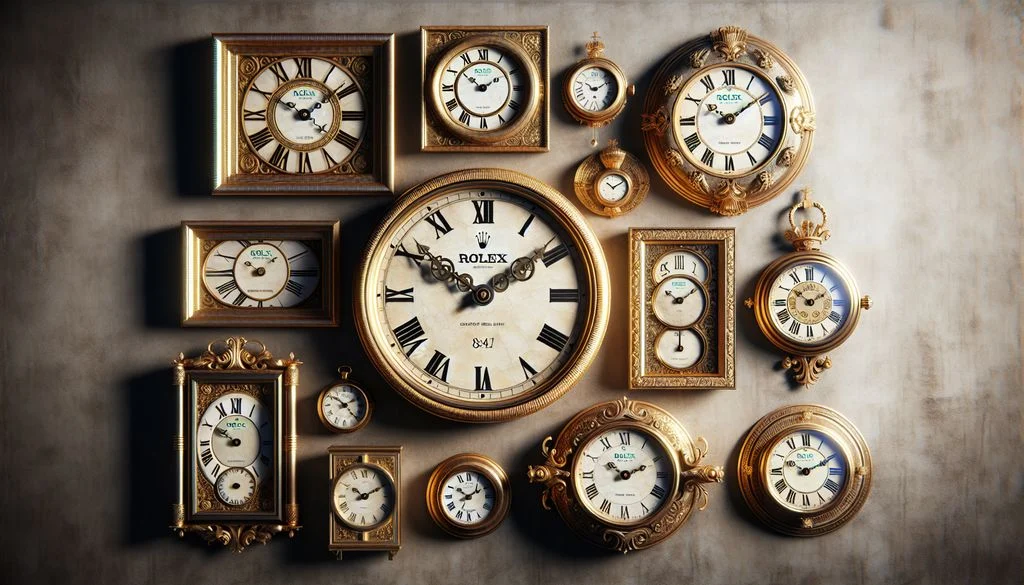In an age where smartwatches and smartphones dominate timekeeping, one might think traditional clocks are a thing of the past. However, the intersection of technology and traditional clock design is bringing new life to classic timepieces. As technology continues to evolve, so do the mechanisms and aesthetics of clocks. Let’s explore how modern innovations are reshaping the traditional clock industry.
1. Smart Clocks: A Fusion of Technology and Elegance
Smart clocks are one of the clearest examples of how traditional timekeeping has embraced modern technology. These clocks blend the beauty of analog designs with the practicality of digital features, offering more than just the time.
Key Features:
- Voice Control: Many smart clocks, like those integrated with Amazon Alexa or Google Assistant, allow users to control them through voice commands.
- Smart Alarms: These clocks often come with advanced alarm settings, allowing users to customize wake-up sounds, lights, and snooze functions.
- Connected Devices: Smart clocks can sync with other smart home devices, acting as a hub for everything from lighting control to setting reminders.
The combination of classic clock aesthetics with modern smart technology creates a seamless blend of tradition and innovation.
2. The Rise of Hybrid Clocks

Hybrid clocks, which combine analog displays with digital functionality, have become increasingly popular. These clocks retain the classic look of an analog clock while integrating digital features, offering the best of both worlds.
Benefits of Hybrid Clocks:
- Analog Look with Digital Accuracy: The hands of hybrid clocks maintain the timeless appeal of analog, but their internal mechanisms use digital technology to ensure accurate timekeeping.
- Energy Efficiency: Hybrid clocks often feature energy-efficient designs, with longer battery lives or solar-powered options.
- Additional Functions: These clocks may include additional features like weather forecasts, calendars, and alarms, making them more versatile than traditional clocks.
Hybrid clocks provide a bridge for those who appreciate the charm of traditional timepieces but desire modern functionality.
3. The Revival of Mechanical Clocks with Modern Mechanisms
While mechanical clocks have a storied history dating back centuries, they are far from obsolete. In fact, modern technology has improved the durability and precision of mechanical clocks, allowing them to compete with their digital counterparts.
Modern Mechanical Innovations:
- Advanced Materials: Today’s mechanical clocks often use materials like silicon, which reduces wear and tear on parts, ensuring a longer lifespan.
- Precision Engineering: With the help of computer-aided design (CAD), clockmakers can now create mechanisms with unprecedented accuracy, minimizing time deviations.
- Automatic Winding: Many mechanical clocks now feature automatic winding mechanisms, eliminating the need for manual winding without sacrificing the allure of traditional design.
These improvements ensure that mechanical clocks remain relevant, even in the digital age.
4. Digital Integration in Classic Clock Designs
Many classic clock designs are being updated with digital components that enhance their functionality without compromising their timeless appeal.
Examples of Integration:
- Digital Displays on Analog Clocks: Some wall clocks now feature small digital displays that show additional information such as temperature, date, or moon phases, while the hands of the clock continue to tell time traditionally.
- LED Backlighting: Many clocks incorporate LED lighting to improve visibility at night, combining modern lighting technology with the traditional analog form.
- Bluetooth Connectivity: Bluetooth-enabled clocks allow users to sync their clocks with mobile devices for accurate timekeeping or alarm settings.
This subtle integration of digital technology ensures that even classic timepieces can offer modern convenience.
5. Clock Apps and Virtual Timekeeping
While physical clocks continue to evolve, there’s also been a surge in virtual clocks and timekeeping apps. These digital solutions, often paired with AI assistants or mobile devices, serve as modern replacements or complements to traditional clocks.
Notable Features:
- Customizable Designs: Virtual clocks allow users to choose from various designs, replicating the look of traditional clocks on their digital devices.
- Time Zone Tracking: Virtual clocks can easily track multiple time zones, making them ideal for global travelers or business professionals.
- Personalization: Users can customize everything from the clock face to the alarm sounds, offering a level of personalization that physical clocks may not provide.
These virtual clocks showcase how technology can replicate the aesthetics and functionality of traditional timepieces on digital platforms.
Conclusion: A Timeless Future
The blending of technology and traditional clockmaking is a testament to the adaptability of timekeeping in an ever-evolving world. From smart clocks and hybrid designs to the revitalization of mechanical timepieces, the future of clocks remains bright. Whether you appreciate the elegance of a vintage clock or the convenience of a smart one, modern innovations ensure that timepieces continue to be both functional and fashionable for generations to come.



